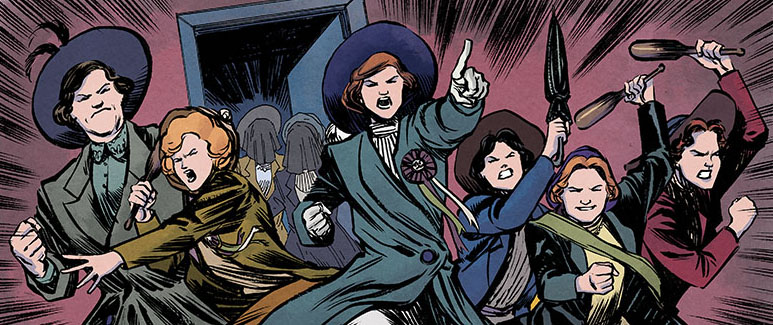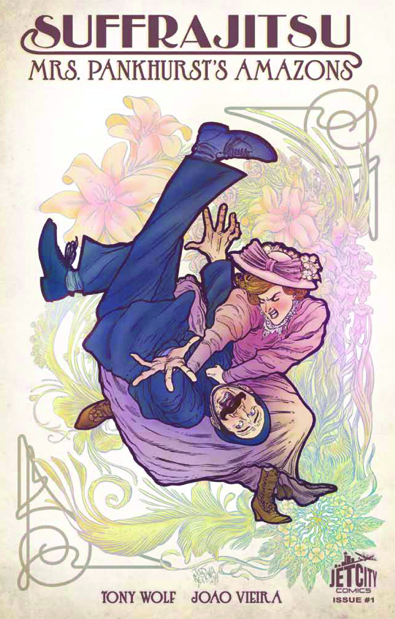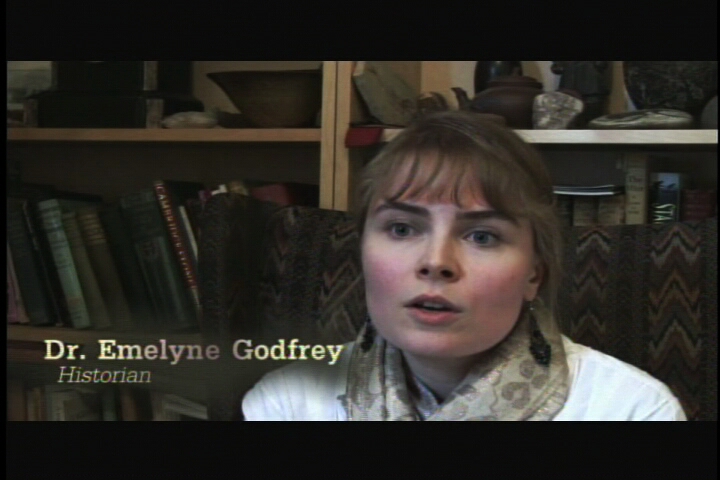
From Edith Garrud
“Edith Garrud: a public vote for the suffragette who taught martial arts” (2012)
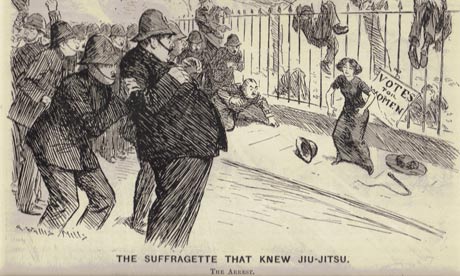
Click here to read journalist Rachel Williams’ article for The Guardian on Suffragette jiujitsu trainer Edith Garrud, including quotes from Tony Wolf.
The Amazons in pop-culture and in the media
The stories of the Suffragette Amazons were all but forgotten throughout most of the 20th century, but the Women’s Liberation movement of the 1960s and ’70s sparked a revival of interest in their “secret history”. Notable amongst these were Antonia Raeburn’s The Militant Suffragettes (1973), the BBC TV mini-series Shoulder to Shoulder (1974) and Midge Mackenzie’s companion volume Shoulder to Shoulder: The Stirring History of the Militant Suffragettes (1975).
The advent of the Internet has seen an increasing number of Suffragette Amazon-related media projects, from books and websites to documentaries and graphic novels.
The following is a summary of media that deal specifically with the Amazons, or in which their principals play key roles:
1982
Writer/director Noel Burch directs The Year of the Bodyguard, a docudrama for Britain’s Channel 4 that deals with the social history and lore of Mrs. Pankhurst’s Amazons. Unfortunately, it has never been released on DVD and modern screenings are extremely rare. We are, however, pleased to be able to present this interview with Mr. Burch in which he reminisces about the production, together with this detailed, illustrated summary of the docudrama itself.
In this scene from The Year of the Bodyguard, a group of Suffragettes escaping from the police after a window-smashing protest take refuge inside Edith Garrud’s jujitsu school. The scene is closely based on an anecdotal account of real-life events, as reported decades after the fact by Edith Garrud herself:
1998
Gretchen Wilson’s With All Her Might (1998) is a biography of her great-aunt, Gertrude Harding, who was one of the principal organisers of the Suffragette Bodyguard society.
2000

The Perfect Daughter, part of Gillian Linscott’s series of novels about Suffragette detective Nell Bray, features a martial arts-oriented subplot and Edith Garrud appears as a supporting character.
2005-08
Both volumes of the Bartitsu Compendium (2005/08), edited by Tony Wolf, feature collections of archival newspaper articles relating to Edith Garrud and the Bodyguard team’s martial arts training.
The Lady Cavaliers theatre company produces a short play, Mrs. Garrud’s Dojo, that offers a lighthearted look at early 20th century gender politics via “Suffrajitsu”.
2009

Tony and Kathrynne Wolf publish Edith Garrud – the Suffragette who knew Jujutsu to introduce the story of the Amazons to younger readers.
2011
The documentary Bartitsu: The Lost Martial Art of Sherlock Holmes, co-produced and co-directed by Tony Wolf and featuring an interview with Emelyne Godfrey showcases the Jujitsuffragettes and features a re-enactment of their combat training.

The play The Hooligan and the Lady, a dramatised biography of feminist jiujitsu pioneer Florence “Flossie” Le Mar, was a hit at the 2011 New Zealand Fringe Festival.
2012
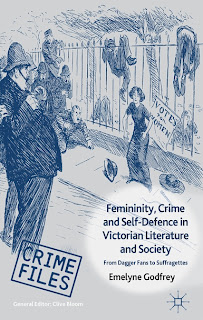
Emelyne Godfrey’s book Femininity, Crime and Self-Defence in Victorian Literature and Society: From Dagger-Fans to Suffragettes devotes a full chapter to the Bodyguard, Edith Garrud and Edwardian jiujitsu.

Anne Bertram’s play The Good Fight, performed by Theatre Unbound, explores the social and political pressures that led the WSPU to create the Bodyguard team.
Click here to listen to reporter Julian Bedford’s interview with Tony Wolf for the BBC World Service radio programme, concerning the Suffragette Bodyguards.
2013
The BBC documentary Everybody Was Kung-fu Fighting: A History of the Martial Arts in Great Britain (2013) showcases the Suffragette Amazons, featuring an excerpt from The Year of the Bodyguard and interviews with Emelyne Godfrey and Tony Wolf.
2014
Icon Films produces this mini-documentary on the life and times of jujitsuffragette trainer Edith Garrud, hosted by Honor Blackman and featuring an interview with Emelyne Godfrey.
2015
The graphic novel Suffrajitsu, written by Tony Wolf with art by João Vieira, is published via Amazon’s Jet City Comics imprint.

The mystery novel Move your Blooming Corpse, featuring Eliza Doolittle and Professor Henry Higgins as detectives in Edwardian London, also includes Edith Garrud and the suffragette Bodyguard team.
Edith Garrud demonstrates jiujitsu
“Suffragettes and Policemen: Amazons in the Making” (1910)
From the London Daily Mail, 25 August 1910:
A practical test of Suffragette jiujitsu took place the other evening between Mrs. Garrud, an expert in the Japanese art, and a policeman. Mrs. Garrud is one of the organisers of the women athletes’ branch of the Women’s Freedom League, and her object is to make jiu-jitsu an additional weapon of woman’s fight for the vote
The first policeman opponent was not an interrupter at a meeting, nor had he offered a Suffragette any insult, other than a doubt that Mrs. Garrud could toss him over her head. In explaining how it would be possible for the Suffragettes in future to police their own meetings and forcibly eject any of their one-time lords, Mrs. Garrud had casually remarked that for her part the overthrow of an average policeman would be a simple matter. In no way did the constable resent her expression of opinion, but his doubts were evident. A smile crept over his face as he stood regarding her. “Why,” he said, “you’re only a little dot of a woman.”
“Well., I’m not exactly a giant,” admitted the Suffragette. “If you’re sure you aren’t frightened of getting hurt, I think I’ll throw you.”
Again the big policemau smiled. It was all so very, very foolish. His great red hands played idly about his 43in chest, and then in a moment of vanity he clenched his right fist, so that the muscles of his forearm stood out in heavy lumps.
Mrs. Garrud is 4ft 10 inches in height, and she, too, smiled. “I’m glad you’re not more than thirteen stone,” she murmured.
Then the struggle commenced. As a huge mastiff would bend down upon au insolent kitten, the man swooped on the womau. First he tried for a catch-as-catch-can bodyhold, but the Suffragette eluded his grasp. Their hands met, and the giant tried to pull her to him, but that was the very last thing she intended to allow. Pulling away from him, she ran lightly backwards, with the policemau pressing heavily after her. Desperately he exerted all his strength, striving to push the woman off her balance aud on to the mat. Then, suddenly, the thing happened. In a flash the woman fell flat on her back, with the massive policeman towering above her. Up shot one of her feet to meet his diaphragm. Her little arms strained, and as he pulled against himself the man lost his balance, swirled over her head, turned a somersault in mid-air, and fell heavily on the back of his head. In less than ten seconds the Suffragette had thrown the policeman.
Five minutes later, when he once more condescended to stand upright, the puzzled policeman again carefully regarded Mrs. Garrud. Contemplatively he scratched his head. “If that had happened on the pavement instead of these mats the police force would be one man short at this moment,” he said. “That fall would have cracked my skull.”
Another policeman awaited his turn. Lighter in build than the other, but more alert and more athletic in every way, the second man had the further advantage of a sound knowledge of the secrets of jiu-jitsu. “Now I shall have to do something really decent,” said the Suffragette. ”That last bout was just child’s play. I’ll enjoy this much better.”
For a full minute they played for an opening. At first the man tried for a catch-as-catch-can hold, but the woman was too wary. Just as the policeman’s arms seemed to have locked about her she would slip away, and, clutching his wrists, attempt to pull him after her as she ran backwards to gain the impetus for the stomach fall which proved the first man’s downfall.
At last the man’s superior strength and great advantage in weight commenced to tell. Desperately she tried for a side-hold, and then the end came. Just failing to effect the grip, the woman was at the man’s mercy. High in the air he swung her and then down upon the mat she went. But even as she fell she made for a wristhold, missing it by an inch. Two taps on the floor as a signal that she was defeated and the woman rose smilingly for another bout.
The first position taught by Mrs. Garrud to her Suffragette pupils is the “trip.” After the theory had been carefully explained, the two women gripped each other firmly by the upper arms. They swayed a little, and then Mrs. Garrud pressed her opponent backwards a few steps, but out went the pupil’s foot against her shin, and down went the teacher. Lying as she fell, Mrs. Garrud explained the next positions — how to safeguard the face from being struck when bending over a fallen combatant to pin her to the ground, then how to pin both hands to the ground. This was repeated several times and another new “lock” added, which effectually quieted the instructress.
“I do not often teach more than two new features each day,” said Mrs. Garrud. “They are so apt to confuse them unless they practise very diligently. To master the art thoroughly requires about thirty-six lessons, but, of course, people can become efficient in less than a dozen.” As these combatants retired a girl came forward — it would be neither fair nor sportsmanlike to divulge her identity —who is nearing the completion of her course. Judging from the light-hearted and easy way in which she threw a man over her head half a dozen times, the London police force may well shake in their shoes at the prospect of what the future may hold.
Edith Garrud’s “portrait sculpture” in London (2013)
A “portrait sculpture” of Jujitsuffragette trainer Edith Garrud (left), along with health pioneer Florence Keen and music producer Jazzie B outside London’s Finsbury Park bus and tube station.
Jazzie B joined by, from left, Andrew Turton, Islington Council leader Catherine West and Martin Williams.
The portrait bench is a feature of a new walking and cycling route established by the Islington Council. The cycle route links Highbury Fields, Gillespie Park and Finsbury Park together.

Edith Garrud was renowned for teaching ju jitsu to suffragettes to help them in their battles against the police.
All three subjects were chosen by public vote. The family of Edith Garrud were also on hand to unveil their relative’s statue. Her great-nephew Martin Williams said: “She was a suffragette and was able to teach suffragettes how to defend themselves.”
The unveiling of Edith Garrud’s memorial plaque in London (2012)
Edith Garrud’s great-great-great-grandniece and namesake poses with a replica of the plaque commemorating her ancestor, and with her toy octopus friend.
Thanks to Martin Williams, a descendent of Edith Garrud’s, for both organising the commemorative plaque project and for writing this guest post.
On a sunny Saturday in June 2012, around 70 people congregated around the steps of a house in a smart square in London to celebrate the life of a brave woman who had once lived there; Edith Margaret Garrud, the jujitsu trainer of the Bodyguard corps of the British Suffragette movement circa 1910-1913. Two of the people present had known Edith Garrud; her grand daughters Jenny Cooper and Sybil Evans. To them, she was just Nana.
There was a group of about fifteen members of the Garrud family, many of them from Sheffield in the North of England who had travelled 200 miles to be present at the unveiling of the relative none of them had met. They said they were inspired by her courage and wanted to be part of the ceremony. I met people from one of the London Judo societies and several women proud of their Suffragette predecessors who had helped women to take their place in today’s society. A young boxing enthusiast was clear that Edith and her companions had made it possible for her to be accepted as a boxer today.
As the appointed time for the unveiling approached, the photographer
marshalled groups of family supporters, descendents and others into groups to record the event for the local newspaper and to make pictures for a permanent display of the achievements of Islington people. Although too little to understand much of what was happening today, young Edie will surely grow up to be proud of the ancestor whose name she carries.
At last the photographs were over and the crowd gathered round under the green veil which covered the plaque to listen to a short speech from the Leader of Islington Council. She spoke a little about the Suffragette movement and the equality they sought. She reminded us that the council is trying to promote encourage equality today, between the residents on the west side of Caledonian Road who live on £10,000 a year and those so near on the east side such as the area of Thornhill Square where houses may sell for £2 million. She thanked local Councillors for attending this celebration, and then asked one of the relatives to say a few words. As this was unexpected, I managed only to thank Tony Wolf who started all of this and Islington Council for all of their efforts with the Plaque, and then turned back to the Leader to unveil the Plaque.
There were more photographs, the green baize curtains revealed the Plaque, and after a round of applause most people moved across the road to St Andrews church to enjoy cups of tea and cakes and a good opportunity to find out who else had come to the celebration. Around the walls of the church room there were panels prepared by Islington illustrating the Suffragette movement, there was also a large copy of the Punch cartoon and a family tree showing where Edith fitted into the Williams/Garrud/Jones/Deamer families. After an hour or so of meeting new friends and distant relatives people began to drift away for some long journeys home. I walked with two members of the Jones family whom I had met first 25 years ago and not seen since, and with a few more fond farewells the party was over.
We went home remembering something of Edith’s life and proud of her achievements and our association with her.
“Suffragettes and Jiu-jitsu” (1910)
From the Wanganui Chronicle, 9 August 1910, Page 5.
No longer is the annoying male interjector to disturb the tranquility of the peaceful Suffragette at her meetings (says the London “Standard”). A Women Athletes’ Society, the latest adjunct of the Women’s Freedom League, has been organised by Mrs. Garrud, a jiu-jitsu expert, and Miss Kelly, one of the hunger-strikers, who entered a Dundee meeting by way of the fanlights.
Mrs. Garrud is not an inch taller than five feet, but she has already enjoyed the pleasure of throwing a six-foot policeman over her shoulder. “He was a very nice man, and he didn’t mind a bit,” she said. “But there are other men who are not a bit nice, men who are merely silly and a nuisance to others besides themselves. I have already had the pleasure of ejecting one youth from a woman’s franchise meeting, and after we have had our new society in full swing for some months, we hope to have a regular band of jujitsu officers, who will be able to deal with all the male rowdies who dare to bother us. Only to-day I received a letter from the headmistress of a North London girls’ school saying that she desires to enroll all her pupils in our society.”
